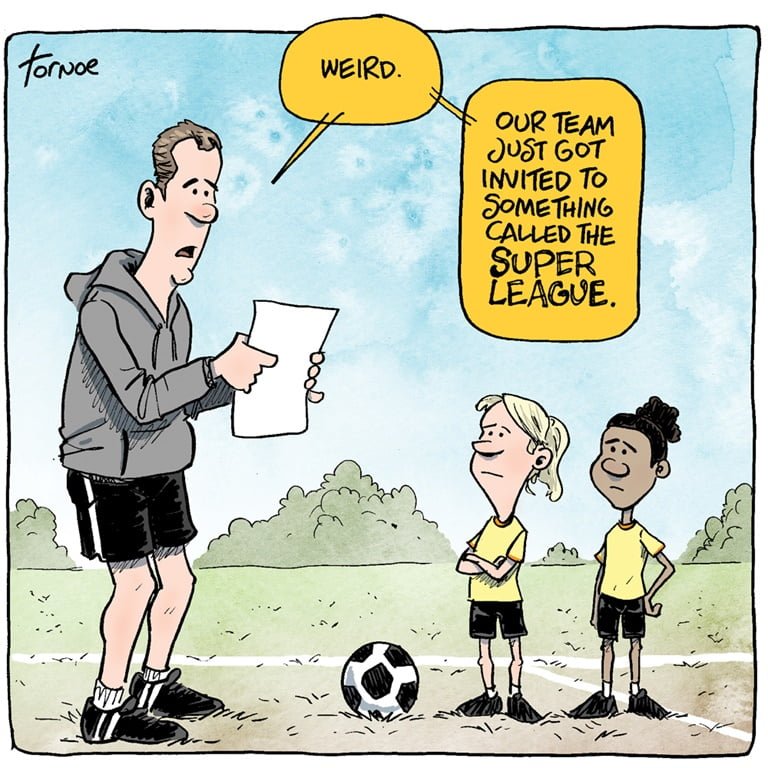The adversities female athletes face in the sporting world range from discrimination, sexism, and misogyny to sexual harassment and objectification. There is a different set of standards for women, and women athletes are no exception. They have to overcome an additional set of hurdles alongside the athletic challenges and physical demands of their chosen field.
To what extent are these issues connected to the fact that these athletes inhabit female bodies? Male bodies and female bodies are different, but so is male and female embodiment. Given that our embodiment in the world is intrinsically and systematically gendered, how does that impact female athletes?
(Female) embodiment
In the simplest formulation, embodiment is the idea that our minds and experiences are connected to our bodies. Our physical presence connects us to the world, and we inhabit the world through our bodies. Hence embodied perspectives assert that our bodies can and do influence our feelings, thoughts and actions, for example, the menstrual cycle affecting mood.
The concept of embodiment is applied in various disciplines such as cognitive science, psychology and sociology, but it has its roots in the domain of phenomenology, especially in the work of Maurice Merleau-Ponty, who argued that the body was not just a physical object. The body is part of our consciousness and affects how we understand the world.

His contemporary, the feminist philosopher Simone de Beauvoir, takes embodiment as a central theme in her seminal work The Second Sex. She argued that women do not interact with the world in the same way as men, they have different physical and social experiences. In other words, embodiment is gendered.
Female embodiment, simply put, refers to the unique way in which women experience and interact with the world through their bodies. It includes aspects like physical experiences, societal perceptions, and personal identity, all shaped by being a woman. Being a woman (and/or inhabiting a female body) influences the way one moves, feels and lives in the world.
Throwing like a girl
The phrase “throwing like a girl” has been used in a derogatory manner to insult those who are struggling at a physical sport, especially if they do not have the physical strength for the task at hand. It is built on the assumption that women and girls inherently lack the physical prowess or the skills for certain athletic activities, while boys and men are inherently better.
There can be many reasons put forth to explain gender disparity in athletes’ sporting performances, and inherent inferiority isn’t one of them. One of the reasons is the historical imbalance in resources and opportunities for male and female athletes, including a lack of access to training and exposure for the latter that continues to the present. Another reason is the starkly different social expectations and socialisation for girls and boys, as well as cultural norms and attitudes towards men and women in sports. They are also subject to sexual objectification and harassment that male athletes may not face to the same degree.
A feminist-embodied perspective takes all these explanations into account and reinterprets them with the female body at the centre. In 1980, Iris Marion Young wrote an essay that is now a feminist classic, called Throwing like a Girl: A Phenomenology of Feminine Body Comportment Motility and Spatiality. It built on the ideas of Simone de Beauvoir and Merleau-Ponty to examine the differences in feminine and masculine norms of movements, in the context of the subjective, lived experience of women.
Moving like a girl in a man’s world
Iris Marion Young’s account highlights the fact that societal expectations and gender norms influence women’s bodily experiences, including physical activity. Compared to de Beauvoir, Young’s account of female embodiment is more inclusive and less reductive. She emphasises that women’s relationship with their bodies is a product of being situated in a patriarchal society.

She argues that girls and women are taught, both explicitly and implicitly, to inhibit their movement, to constrain themselves, not to take up too much space, and to be careful about how others perceive them and their bodies. As adults, women are aware that their bodies are seen as sexual objects by men, and, constantly aware of the male gaze, think of their bodies not only as subjects but also as objects that must be protected. Hence Young supports de Beauvoir’s assertions that women often experience their bodies as fragile, or as a burden.
Young hence argues that women are not able to perform to their maximum physical ability due to these socialised psychological barriers. To take a common example, girls and women who play sports are often constantly aware of how their bodies could be perceived. They may constantly adjust their clothes, or simply have this awareness at the back of their minds even if they train themselves not to act on it. Of course, this affects sporting performance as well as their general well-being.
Women and their bodies in sports
Phenomenological analyses have remained under-utilised in sports studies until very recently. The first concerns the female body as the object of the male gaze and sexual violence and how it impacts female athletes. We have recently seen through the wrestlers’ protest, that sexual violence against female athletes is rampant and institutionalised. Being aware of this violence and feeling the need to protect themselves from its potentiality and actuality affects female embodiment.

In 2011, Allen Collinson wrote about her own experiences running in a public space, in “Feminist Phenomenology and the Woman in the Running Body.” She describes how her history of verbal and physical harassment affected her present-day embodiment while running. “I run warily, eyes and ears on full alert, breath at times shallow so that I can better listen for sounds. My running body is no longer the running habit-body, at ease with itself and the environment, but is brought vividly and jarringly to consciousness.”
Collinson describes how, as a result, her bodily intentionality is redirected from other important things such as terrain, cars, etc. An embodied analysis helps us better understand how her past experiences and current vigilance affect her running.
The second point is that many physical sports are male-dominated space. Female athletes are often expected to perform sporting behaviours influenced by traditional masculinity, which are “considered appropriate within the context of competitive sports.” This may include performing aggressive behaviours or avoiding feminine behaviours.
Successful female athletes who refuse to sacrifice their femininity, such as Serena Williams or Mary Kom, may nevertheless be perceived and described as masculine. This characterisation comes from the unsaid belief that the sporting body is, by default, a male body, which adversely impacts and restricts the sporting embodiment of female as well as trans athletes.
There are many other points of analysis that I could not cover in this article. An important point to note briefly is that female embodiment is not general or uniform. Discussing the structures of female embodiment is similar to discussing the characteristics of femininity, these do not apply to all women, or only to women, or in the same way to everyone. It is impacted by many other factors, such as age, gender identity, sexuality, religion, etc.
Additionally, though it may seem feminist phenomenology overly stresses the negative aspects of female embodiment, this is an important work that allows us to see the restrictive elements in our embodiment that we may not notice. Embodied perspectives also highlight women’s agency in overcoming the barriers to unconstrained, positive experiences of embodiment.
Young herself, in a later revisitation of her essay, accorded greater importance to female social agency. Research also suggests that physically active women had more positive experiences of embodiment (positive body connection and agency and expression), as compared to women who were less physically active. This may suggest that though we are socialised into certain ways of embodiment, we are not locked into them forever.
In fact, many women often choose physical activity and exercise as a way of resistance, immersing themselves in a form of embodiment that is empowering. Understanding the inhibited nature and patriarchal roots of our embodiment is the first step to moving towards a positive female embodiment.
References
- Allen-Collinson, J. (2017). Sporting embodiments: Sports studies and the (continuing) promise of phenomenology, in M Giardina and M Donnelly (eds), Physical Culture, Ethnography and the Body: Theory, Method and Praxis, Abingdon: Routledge
- Allen-Collinson, J (2011) Feminist phenomenology and the woman in the running body, Sport, Ethics & Philosophy.
- Young, I.M. 1980. Throwing like a girl: A phenomenology of feminine body comportment, motility and spatiality. Human Studies.
- Young, I.M. 1998. ‘Throwing like a girl’: Twenty years later. In Body and Flesh: A Philosophical Reader, edited by D. Welton. Oxford: Blackwell.
- Paulson, G., & Greenleaf, C. (2022). “I Feel Empowered and Alive!”: Exploring Embodiment Among Physically Active Women. Women in Sport and Physical Activity Journal, 30(1), 27–34.
- HOWE, L. A. (2003). Athletics, Embodiment, and the Appropriation of the Self. The Journal of Speculative Philosophy, 17(2), 92–107.
- Wellard, I. Gendered performances in sport: an embodied approach. Palgrave Commun 2, 16003 (2016).
- Clark A. Exploring Women’s Experiences: Embodied Pathways and Influences for Exercise Participation. Societies. 2019; 9(1):16.
About the author(s)
Simran is a teacher and writer from Pune. They write about feminist issues from a philosophical perspective. They are committed to working on the issue of sexual and gender-based violence (SGBV). They love reading and learning languages (fluent in French, they are now trying their hand at Spanish and German). Simran has a BA in Philosophy from Fergusson College and a Masters in Cognitive Sciences from IIT Gandhinagar. They can be found on Instagram as @willtophilosophy, where they post about philosophy, literature and feminism.





